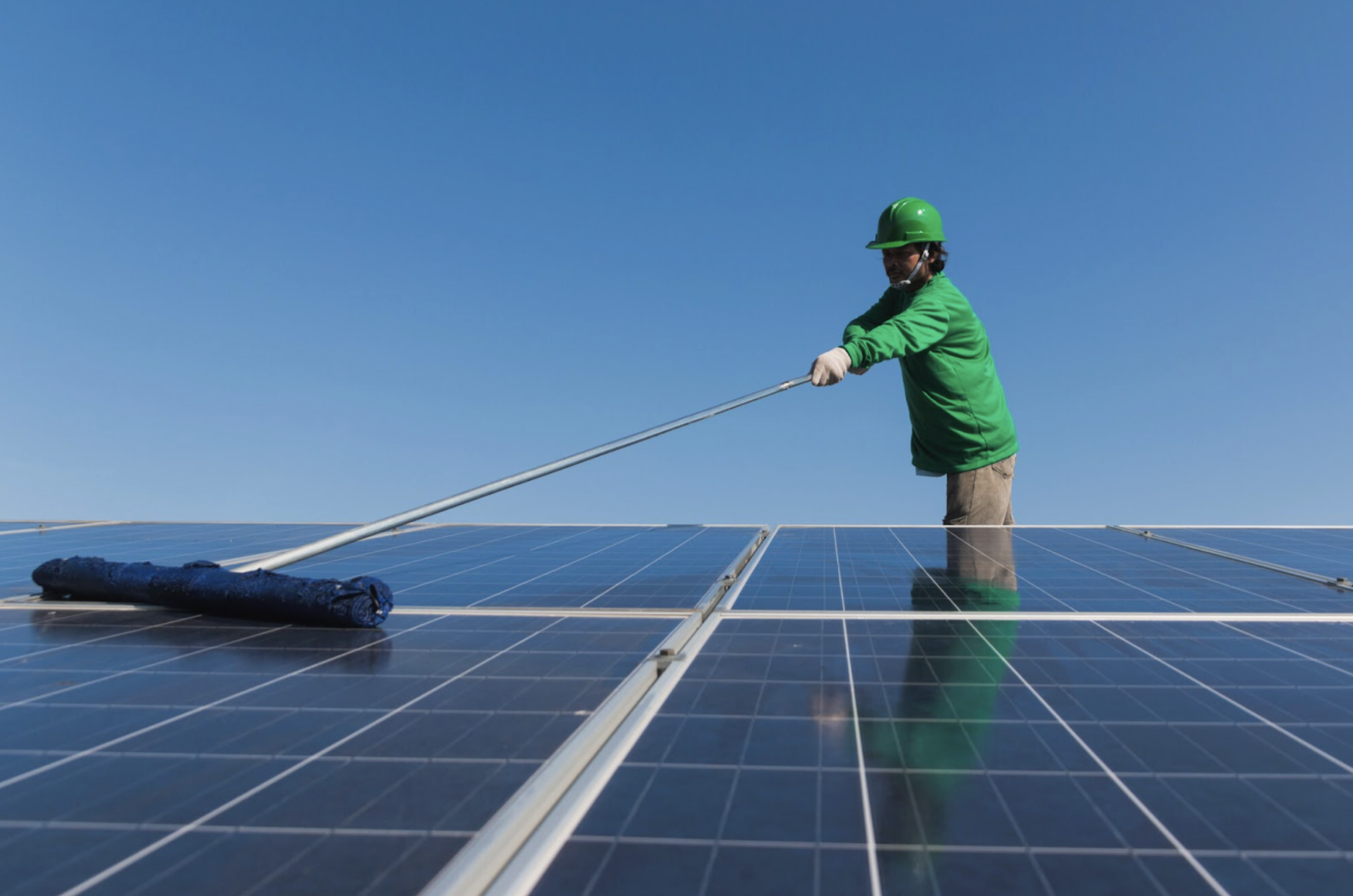
More and more Americans are installing solar panels in their home. 39 percent of homeowners recently surveyed said they were considering it.
If you plan to get solar panels, it’s important that you know how to take care of them properly. Luckily, we can help.
Let’s go through the most common errors in solar panel cleaning.
1. Using Abrasive Materials
Scrubbing solar panels with abrasive materials like steel wool or harsh brushes can scratch the glass surface and reduce its efficiency.
The protective coating on solar panels plays a vital role in safeguarding them against environmental elements. Abrasive materials can strip away or damage this coating. That leaves the panels more vulnerable to dirt, dust, and other contaminants.
It can add to your solar cleaning costs, too. Many solar panel warranties include provisions that exclude damage caused by improper cleaning methods. If you scratch or damage the panels, it may void the warranty. That will make it challenging to seek repairs or replacements.
Avoid using abrasive materials that can cause solar panel damage. Instead, use non-abrasive materials such as soft microfiber cloths, sponges, or soft-bristle brushes specifically designed for solar panels. These materials are gentle enough to clean without causing damage.
2. Ignoring the Sun
Cleaning solar panels while they are hot or exposed to direct sunlight can cause rapid evaporation of the cleaning solution, leaving streaks and residues behind. Additionally, hot panels can be more fragile and prone to damage.
Plan your solar cleaning routine early in the morning or in the evening. At these times, the panels will be cooler and not exposed to direct sunlight. This allows the cleaning solution to work effectively without evaporating too quickly.
If possible, provide temporary shade to the solar panels during the cleaning process to provide protection for solar panels. This can be done using a shade cloth, an umbrella, or even working on a cloudy day. Shading helps improve visibility and ensures thorough cleaning.
Before starting the cleaning process, check the temperature of the solar panels. Wait for them to cool down if they are too hot to ensure proper cleaning and prevent rapid evaporation of the cleaning solution.
3. Too Much Pressure
High-pressure water sources like pressure washers may seem efficient, but they can damage the panels and their wiring. The forceful water spray can dislodge electrical connectors or penetrate seals, leading to potential damage or electrical hazards.
Opt for low-pressure water sources such as a garden hose with a gentle spray nozzle attachment. Alternatively, use a bucket of water or a spray bottle for manual cleaning. Aim for a gentle stream of water to avoid any unnecessary force on the panels.
4. Not Staying Safe
Working at heights to clean solar panels can be risky. Since solar panels generate electricity, it’s essential to turn off the electrical supply to avoid potential electrical hazards while cleaning.
Climbing onto roofs or using ladders to access solar panels can be risky if not done safely. Accidents from falls can result in severe injuries.
Personal protective equipment is crucial to protect yourself from potential hazards during the cleaning process. Neglecting PPE can increase the risk of injury or exposure to harmful substances.
Always prioritize safety when cleaning solar panels. Use appropriate safety equipment and follow safety guidelines, especially if you need to climb on the roof. If you’re unsure or uncomfortable with heights, consider hiring a professional solar panel cleaning service.
5. Abusing Harsh Chemicals
Using strong chemicals or cleaning agents can damage the protective coating or leave residues on the panels. Chemical residue or damage to the panel surface can decrease the efficiency of your residential solar system. That will result in lower energy production.
Harsh chemicals can corrode the surface of solar panels. This can lead to irreversible damage. Some chemicals can strip away protective coatings on the panels, leaving them vulnerable to environmental elements.
If harsh chemicals run off onto surrounding vegetation or lawns, they can harm or kill plants and disrupt the local ecosystem. Harsh chemicals can pose health hazards to the person cleaning the panels if they come into contact with the skin, eyes, or if they are inhaled.
Stick to mild cleaning solutions. A mixture of warm water and a gentle dishwashing soap is usually sufficient for cleaning solar panels. Avoid using chemicals like bleach, ammonia, or abrasive detergents.
6. Missing Spots
While the top surface of solar panels may gather the most visible dirt, debris can also accumulate on the underside of the panels, particularly if there are gaps or space between the panels and the mounting structure.
During the cleaning process, pay attention to the underside of the panels as well. Use a gentle stream of water or a soft brush to remove any dirt or debris that may have accumulated.
Solar panels may have nooks, corners, or edges that are harder to access during cleaning. Make sure to pay extra attention to these areas and use appropriate tools to reach and clean them effectively.
The underside of solar panels can be challenging to reach, especially if they are installed at a height or in a tilted position. Make sure to use appropriate safety measures and equipment to access and clean the undersides effectively.
Errors in Solar Panel Cleaning: Now You Know
There are more errors in solar panel cleaning you can make than you might’ve thought. Hopefully, now, you have some idea of how to keep your panels in proper shape.
Do you need more advice on home maintenance and so much more? Take a look through a few of our other helpful posts.
Published by HOLR Magazine.


